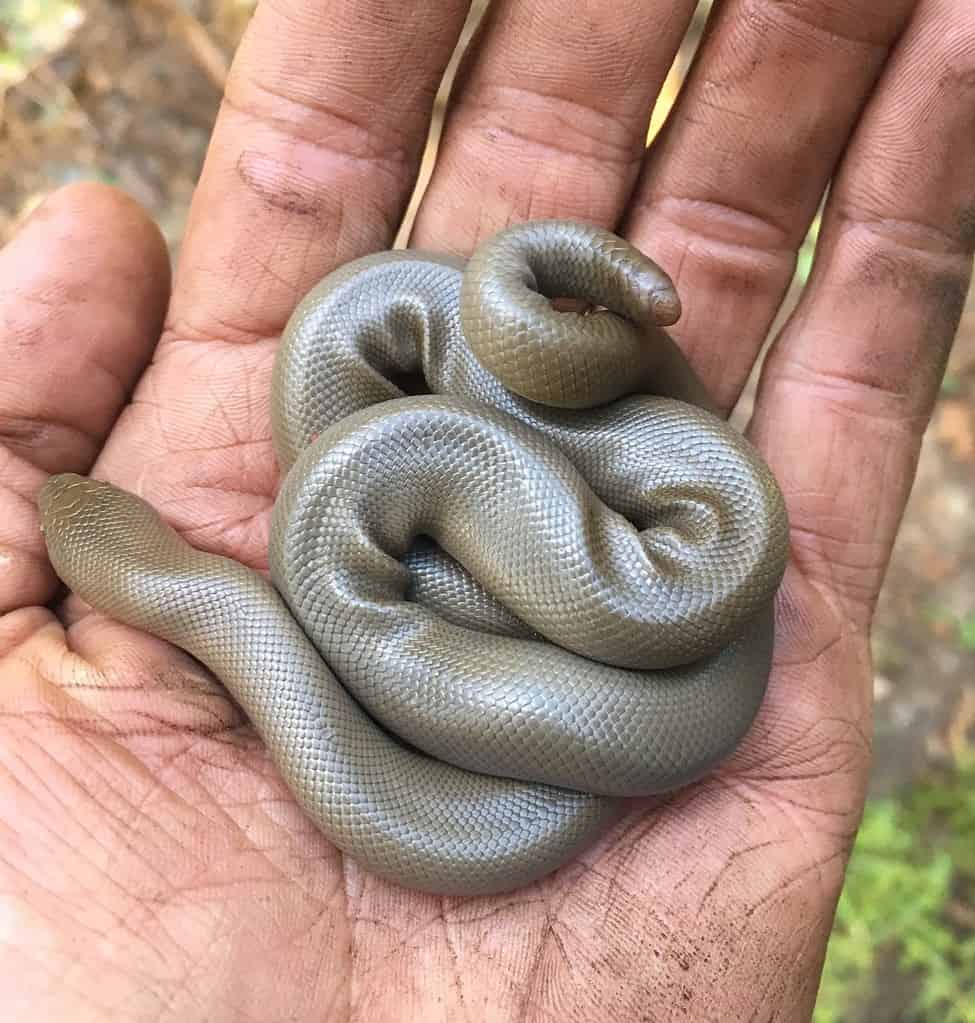According to some estimates, as many as one-third of the population suffers from a fear of snakes, known as ophidiophobia. There may even be a genetic component! However, by taking the right approach, phobias can sometimes be reduced or eliminated, freeing the individual from a fearsome burden.
How Phobias Begin
According to the Cleveland Clinic, a phobia is a fear so overwhelming that triggering it means your life is interrupted because of the anxiety associated with it. Most phobias get their start because of an experience, but there are other factors too.
In Untangling Genetic Networks of Panic, Fear, Phobia, and Anxiety, researchers discovered that when one close family member has a phobia, other siblings have a 39% higher chance of developing one themselves. Does this indicate genetic memory? Perhaps. But also possible is that the gene for phobias runs in families.
Here are the most likely causes of a phobia:
- Traumatic experiences — perhaps you stepped on a snake when you were young and it bit you.
- Learned fears are those that creep in as a result of learning about the phobias of others.
- Genetics — there really may be a genetic component, and more studies show the potential.
- Informational transmission — some phobias start because you spent too much time obsessing over something scary.
Why Get Over Your Snake Phobia?

Rubber boas are calm, nonvenomous snakes that some experts use to help people get over their fear of snakes.
©Matt Berger / CC BY 4.0 – License
Snakes are slimy, gross, and freaky. Why would you ever want to get over a snake phobia? Isn’t it easier to get rid of every snake you see? That way you wouldn’t need to be afraid of snakes.
First of all, snakes aren’t slimy. They’re not amphibians and have dry scales over their bodies — some snakes have smooth, while others have ridged or keeled scales. Snakes are cold-blooded and feel cool to the touch, but are otherwise decidedly not slimy.
Second, snakes are amazing rodent removal services. They can get into cracks and crevices that keep those fluffy and cute animals from clearing out disease-carrying critters. These legless rodent assassins are good for our health.
Although the thought of our health being tied to snakes may make some cringe, it is a fact. Some scientists estimate that timber rattlesnakes remove 2,500 to 4,500 ticks per foraging site per year — just by eating rodents. Take that, Lyme disease!
So why not try to beat the phobia? Besides, being truly afraid of something is no fun. Here are a few ideas that might help you beat the fear — and maybe even come to respect these beautiful reptiles.
Knowledge is Power
This may take longer than you expect, depending on your phobia. Many fears come from a lack of knowledge, or rather, a lack of accurate knowledge. Movies, music, myths, and other stories have a way of seeping into our consciousness in surprising ways. It’s those stories that, while entertaining and sometimes educational, can sometimes become the root of a fear.
And snakes have more misinformation spread about them every single day than nearly any other animal. So start by educating yourself.
Find resources from zoos and college herpetology departments, or books from respected authors. Begin with snakes native to your area and learn to identify them. If even photos of snakes trigger a fear response, start small! Look at just one photo periodically until it’s manageable. Then, choose another photo and learn about that snake.
After looking at photos doesn’t freak you out, or you can manage your level of anxiety, it’s time to get out and look at some real, live snakes. At a distance, but real snakes nonetheless.
Practice Relaxation Techniques

Meditation can help you rework how you respond to a snake phobia.
©iStock.com/Daniel de la Hoz
Yes, it sounds a little silly, but hear us out! According to the Calm Clinic, teaching yourself to be calm in situations that trigger your phobia can also help. By retraining your mind with techniques to help you calm yourself in the face of fear, you can get to a place where, if not completely over your phobia, it is manageable. Sometimes, manageable is all you’ll get.
Look at (and Maybe Touch) Some REAL Snakes!
Now that, hopefully, you’ve been able to dial down your snake anxiety level by looking at photos or perhaps watching documentaries, take a little time to wander through pet stores with snakes. Just look at them. Most of what’s available in a pet store will be harmless corn snakes and ball pythons, but sometimes they carry king snakes or hognoses too.
Another terrific place to see snakes is at your local zoo. Some zoos will even pull out their mellower snakes for people to touch. But, seeing it without glass between you and the serpent may be a little much for you at this stage, so give yourself a little space to move away if necessary.
When you’re ready to try holding one, we have a few recommendations for which snake species might help you finally kick fear to the curb so you can get over your snake phobia.
- Rubber boa: this species is at the top of the list. Rubber boas are indeed used to help people get over a fear of snakes. They’re calm, don’t bite, and not too big.
- The rosy boa is almost as calm as rubber boas. They’re native to North America and popular pets. Rosy boas also stay manageable sizes and almost never bite.
- Kenyan sand boas are another great introductory snake. They’re almost cartoon-snakes, have tiny eyes on top of their heads, and come in beautiful colors. Kenyan sand boa color patterns are pretty enough to help you forget it’s a snake.
- Ball pythons can be a bit spicier. Make sure the one you hold is a calmer, more mature snake. The younger ones can be a little nervous.
- When they aren’t busy playing dead, hognose snakes are also great for people who are just getting over their snake fear.
- Although bigger, boa constrictors often have great, gentle temperaments. Of course, that varies from one individual to the next, but they’re pretty neat snakes.
You’ll notice that many snakes on the list are boas and pythons. That’s because they tend to be slower moving and less fear-inducing. Although corn snakes are great, nonvenomous snakes, they’re quick-moving and can be a little jumpy. And, if you’re jumpy, the snake gets jumpy, and it can set off a nasty fear cycle for you and the snake.
The photo featured at the top of this post is © reptiles4all/Shutterstock.com
Discover the "Monster" Snake 5X Bigger than an Anaconda
Every day A-Z Animals sends out some of the most incredible facts in the world from our free newsletter. Want to discover the 10 most beautiful snakes in the world, a "snake island" where you're never more than 3 feet from danger, or a "monster" snake 5X larger than an anaconda? Then sign up right now and you'll start receiving our daily newsletter absolutely free.
Thank you for reading! Have some feedback for us? Contact the AZ Animals editorial team.






